Key takeaways:
- Consumer protection laws empower individuals, transforming a stressful shopping experience into one of confidence and security.
- Historical advocacy, including the influence of muckrakers and corporate responsibility movements, laid the groundwork for modern consumer protection agencies.
- Key issues like product safety, consumer privacy, and deceptive advertising continue to present challenges for advocates and consumers alike.
- Effective advocacy involves education, community building, and storytelling to foster awareness and inspire action in consumer safety issues.
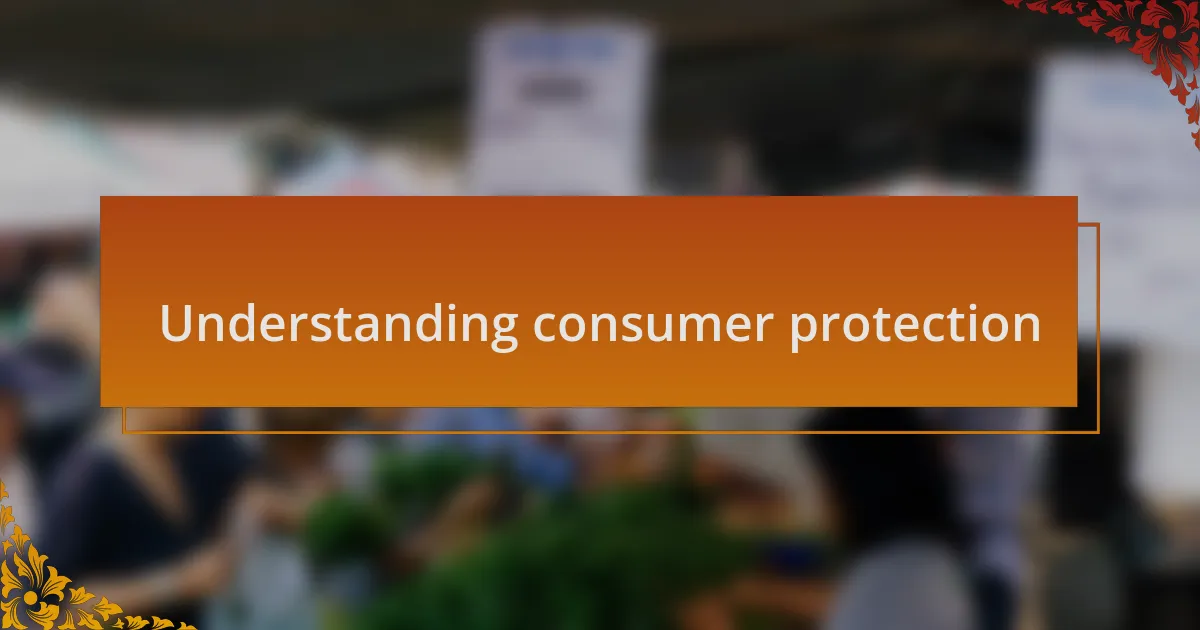
Understanding consumer protection
Consumer protection is about ensuring that our rights as consumers are respected and upheld in the marketplace. It’s not just a set of regulations; it’s a safety net that can help prevent situations I’ve faced—like when I purchased a faulty product and struggled to get a refund. Have you ever felt helpless when trying to resolve a consumer issue? That feeling drives home the importance of having laws and advocates in place to support consumers.
When I first learned about consumer protection laws, I was surprised to discover just how many rights we have—rights that many people don’t even realize exist. For instance, knowing that I could report deceptive advertising or unsafe products made me feel empowered. What would it mean to you if you knew your purchases were protected? It can transform the shopping experience from a stressful endeavor into one where you feel confident and informed.
The landscape of consumer protection constantly evolves to adapt to new challenges, such as digital privacy and online shopping issues. I remember my first online purchase and the anxiety that came with entering my credit card information. It’s crucial to understand that, with evolving technology, we need to stay informed about our rights to safeguard our personal information. Has your trust in online transactions ever been shaken? Exploring these protections can lead to a greater sense of security in your everyday purchases.
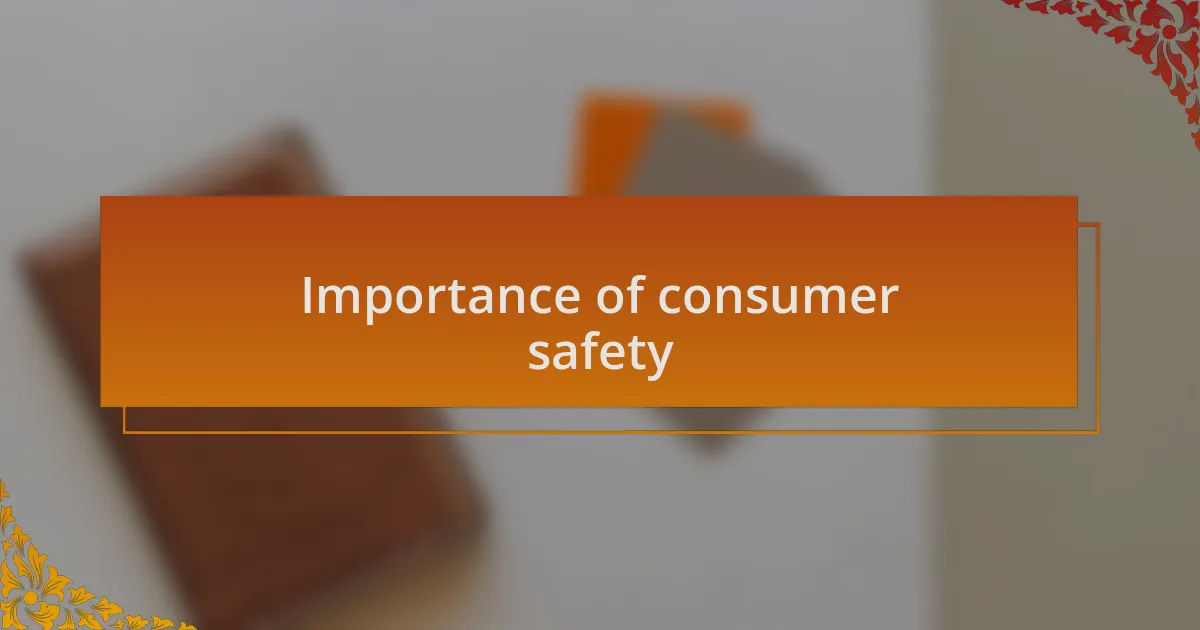
Importance of consumer safety
Consumer safety is vital because it serves as a shield against potential harm, ensuring that products and services do not pose unnecessary risks to our well-being. I vividly recall a time when I bought a toy for my niece that, unbeknownst to me, had a small part that posed a choking hazard. That experience highlighted how essential consumer safety measures are—they not only protect us but also contribute to overall public health.
When I think about the importance of consumer safety, I remember the overwhelming choice we face in the marketplace. Behind every label and shiny advertisement lies the question: is this product truly safe for me and my family? It’s reassuring to know that organizations and regulations exist to sift through these uncertainties, helping us make informed choices and feel secure in what we bring into our homes.
Moreover, the ripple effect of consumer safety extends beyond individual purchases. It creates a culture of accountability among manufacturers and retailers. I often reflect on how companies respond to safety recalls or complaints. Have you noticed the shift in attitudes when consumers are informed and demand better? This collective advocacy fosters an environment where safer products are not just encouraged but expected, ultimately benefiting everyone.
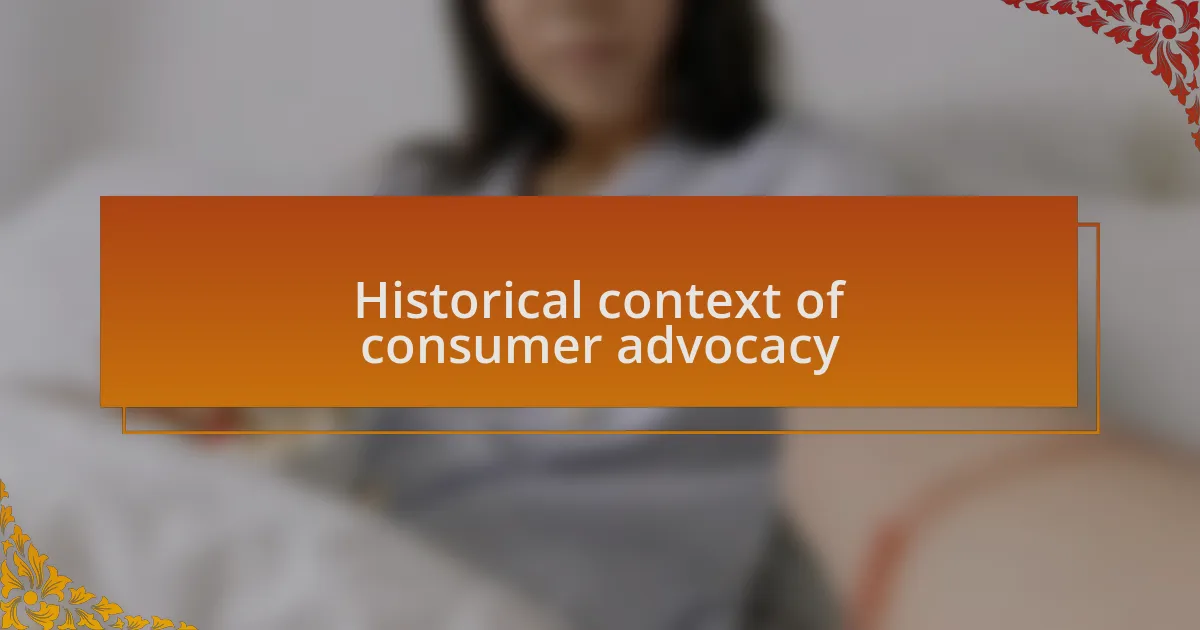
Historical context of consumer advocacy
Consumer advocacy has deep roots in history, tracing back to the early 20th century when industrialization surged and safety hazards became glaringly apparent. I often reflect on how muckrakers like Upton Sinclair used their powerful narratives to expose the grim realities of unsanitary food production, igniting a movement for change. Can you imagine a time when consumers had no voice against such practices? It’s astonishing to think how these early efforts laid the groundwork for organizations like the FDA.
As I delve deeper, I recognize that the 1960s saw a significant shift in consumer advocacy, driven by public discontent and the rise of awareness around corporate responsibility. The insistence on transparency and accountability during this era resonates with me; it reminds me of participatory movements that encouraged consumers to question the safety of everyday products. Have you ever felt compelled to scrutinize a label after hearing about harmful ingredients? This growing skepticism was pivotal, as it empowered consumers to demand not just safer products, but also ethics in production.
In the late 20th century, the establishment of consumer protection agencies and laws marked another milestone. Reflecting on this, I appreciate how organizations began to serve not just as watchdogs, but as advocates for educational initiatives too. I remember attending a seminar where advocates discussed the necessity of understanding consumer rights. Isn’t it fascinating how knowledge can be a form of empowerment? This crucial shift helped consumers become informed participants in the marketplace, setting the stage for ongoing advocacy and reform that continues to evolve today.
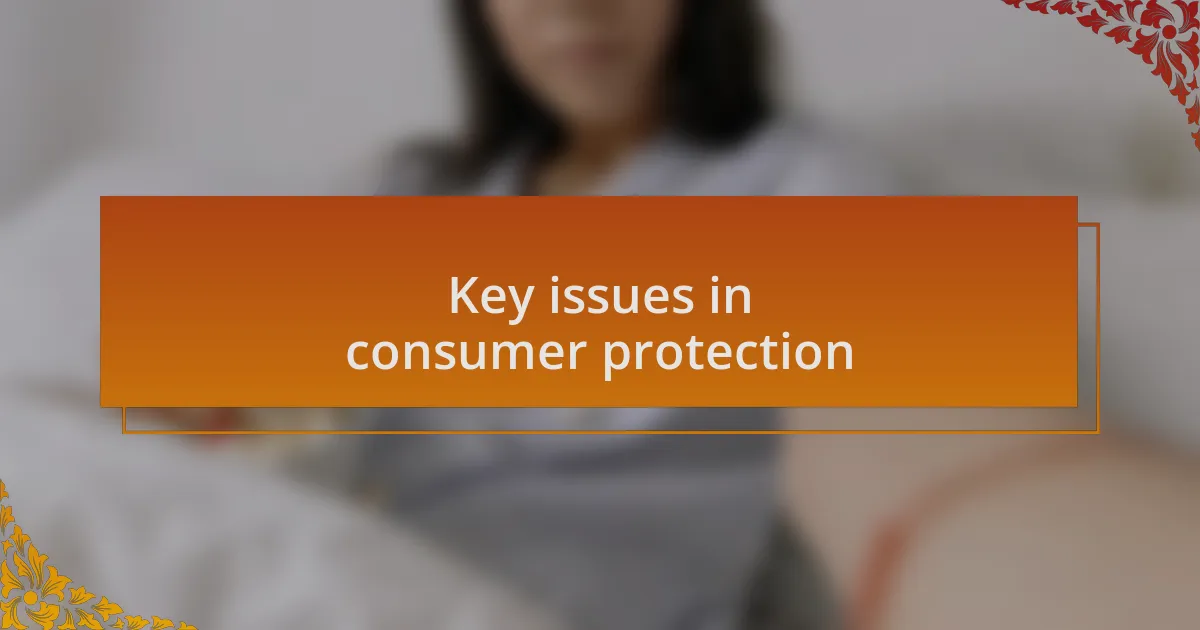
Key issues in consumer protection
There are several key issues in consumer protection that continue to challenge advocates and consumers alike. One of the most pressing is the difficulty in ensuring product safety standards are consistently met across various industries. I recall a personal encounter when I bought a seemingly innocuous toy for my niece, only to discover it had been recalled due to safety violations. This experience drove home the importance of ongoing vigilance in monitoring the safety of products—how many other families were unaware of dangers lurking in their homes?
Another issue is the complex web of consumer privacy and data protection. In an age where personal information is often traded like currency, I find myself questioning how much control we truly have over our own data. After receiving countless emails about data breaches, I felt a growing sense of frustration and fear. What does it say about our consumer rights when our private information isn’t treated with the utmost respect?
Additionally, deceptive advertising remains a pervasive problem. I remember being enticed by a flashy advertisement for a health supplement that promised miraculous results. Once I tried it, not only did it fail to deliver, but I learned it was misleading from the start. Many consumers navigate similar situations daily, left feeling misled and betrayed. Isn’t it disheartening to think about the trust consumers place in brands, only for that trust to be shaken by misleading claims?

Influential experiences in my advocacy
One of the pivotal experiences that shaped my advocacy occurred when I volunteered for a local consumer protection organization. During my time there, I was involved in a case where a family suffered serious injuries due to a faulty appliance. Witnessing the emotional turmoil they faced opened my eyes to the real-life consequences of inadequate safety regulations. How can we allow such situations to persist when families are at risk?
Another defining moment arose from attending a consumer rights conference where a keynote speaker shared their harrowing experience of identity theft. I was struck by the personal narratives behind the statistics we often see—each figure represents a life disrupted. This experience not only reinforced my commitment to advocating for stronger data protection laws but also reminded me of the vulnerability that many consumers face. Why does it take such stories for us to recognize the urgency of consumer protection?
Additionally, I recall a conversation with a close friend who was convinced by a viral online advertisement promoting a skincare product that turned out to be ineffective. As we dug deeper into her experience, I felt a mix of frustration and empathy. How many others might fall for similar tactics? It reminded me that advocacy is not just about laws and regulations; it’s about listening to individual stories and making sure their voices are heard.
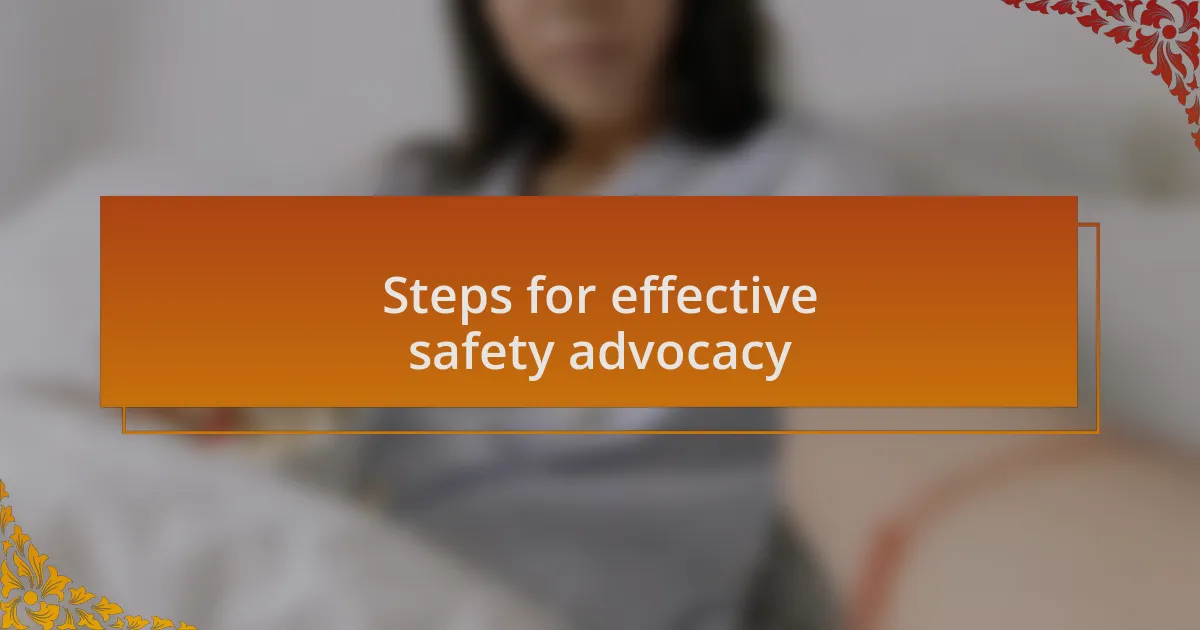
Steps for effective safety advocacy
To advocate effectively for safety, it’s essential to start by educating yourself and others on the specific safety issues at hand. I remember delving deep into research on common household hazards after my neighbor experienced a kitchen fire. The more I learned, the more I realized how ignorance can lead to preventable disasters. Have you ever thought about how knowledge could empower not just you, but your entire community?
Next, building strong connections with like-minded individuals can amplify your voice. I once joined a grassroots group focused on consumer safety, which opened doors to collaborations and shared experiences. The energy and passion of this group inspired me to push harder for change, reminding me that safety advocacy thrives on community support. Isn’t it amazing how unity can transform individual efforts into powerful movements?
Lastly, don’t underestimate the impact of storytelling in advocacy. In sharing personal experiences—like when I spoke to a local school about the dangers of unsafe toys—I witnessed firsthand how stories resonate with people. They engage emotions and foster a better understanding of the stakes involved in safety issues. Have you considered how your own experiences can inspire others to take action?